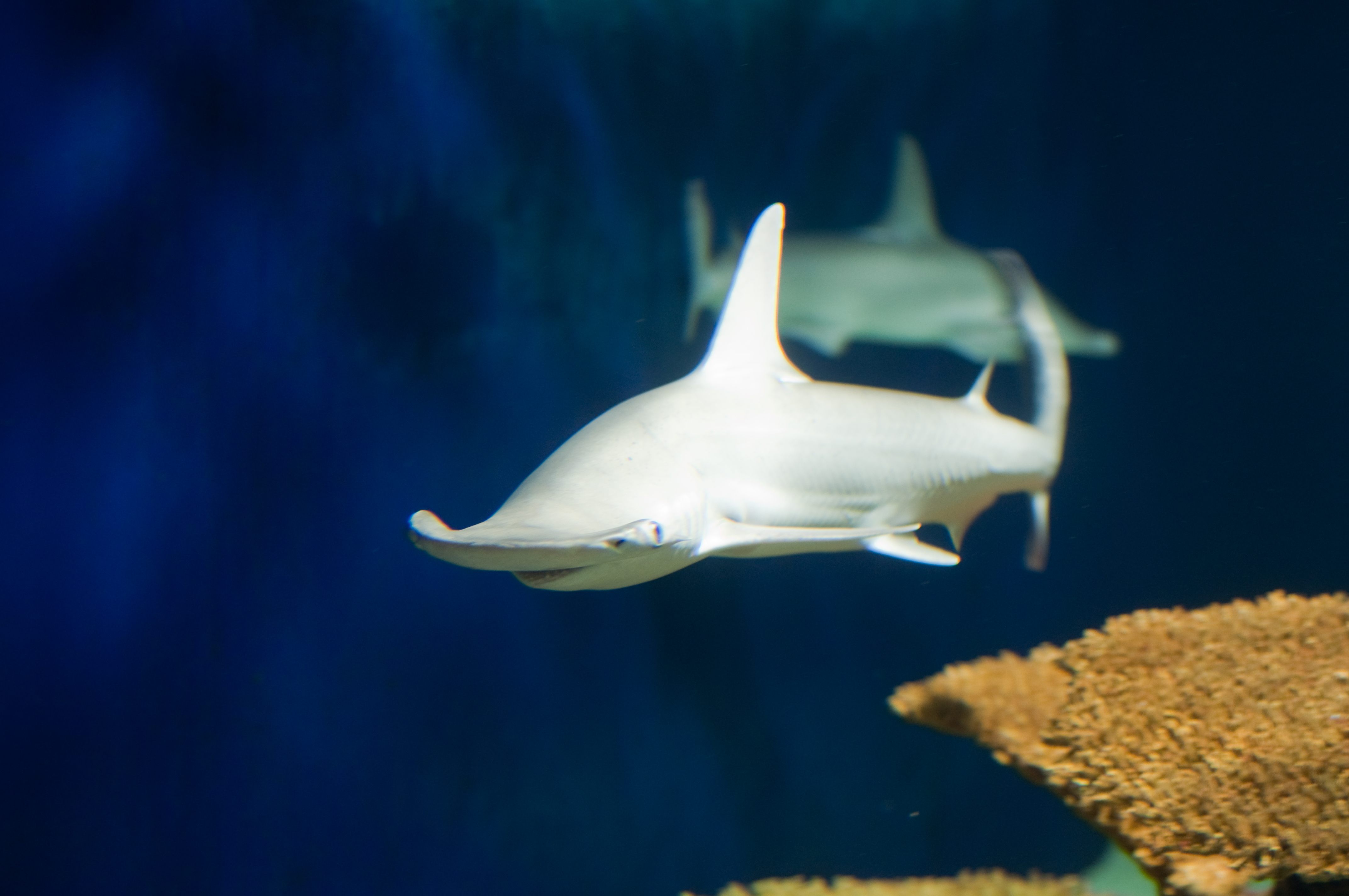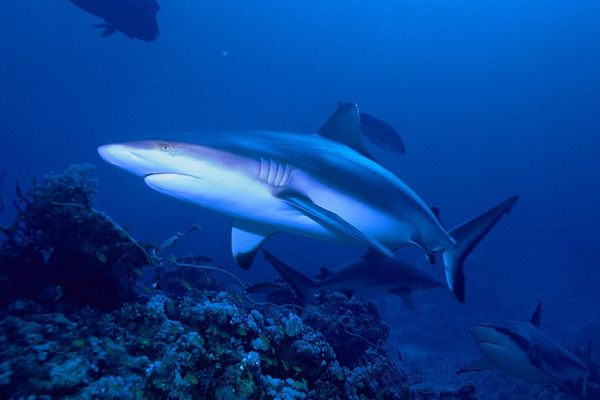The Shark That Thrives on a Flexitarian Diet
For the bonnethead shark, fish can be friends, not food.

About three feet long and pale, with a face like a shovel, the bonnethead shark cruises lush seagrass meadows off both coasts of North America, snacking on shrimp, small crabs, and fish. In 2007, researchers took a close look at the diets of bonnetheads in the Gulf of Mexico by examining their stomach contents. They expected to find the typical carnivorous diet of a small shark, but instead found that almost half the material in their stomachs was seagrass. Were the sharks accidentally snarfing the marine plants as they hunted, or were they getting something out of the grazing?
Samantha Leigh, a doctoral candidate at the University of California, Irvine, decided to find out. She captured sharks in the meadows of the Florida Keys and brought them to Florida International University’s labs, where they were fed on an almost all-seagrass diet. From what we thought we knew about shark guts, they shouldn’t have had the digestive enzymes to break down plant matter at all, but when Leigh looked closer, she found a crucial enzyme that helps break down cellulose. This is the first plant-specific digestive enzyme ever found in sharks.
By tracking carbon isotopes, Leigh observed seagrass nutrients being taken into the shark’s bodies. She also examined their feces, and saw that about 50 percent of the plant matter was being digested—roughly the same as sea turtles, some of whom can live exclusively on the same grass.
The sharks on the new flexitarian diet—90 percent seagrass and 10 percent squid—seemed hale and healthy, and some even put on weight. Bonnetheads, like their endangered hammerhead cousins, have the short intestines typical of carnivores (as opposed to the longer guts usually needed to digest fiber-heavy plant matter). Just how their surprising digestion works is the next unanswered question.





















Follow us on Twitter to get the latest on the world's hidden wonders.
Like us on Facebook to get the latest on the world's hidden wonders.
Follow us on Twitter Like us on Facebook